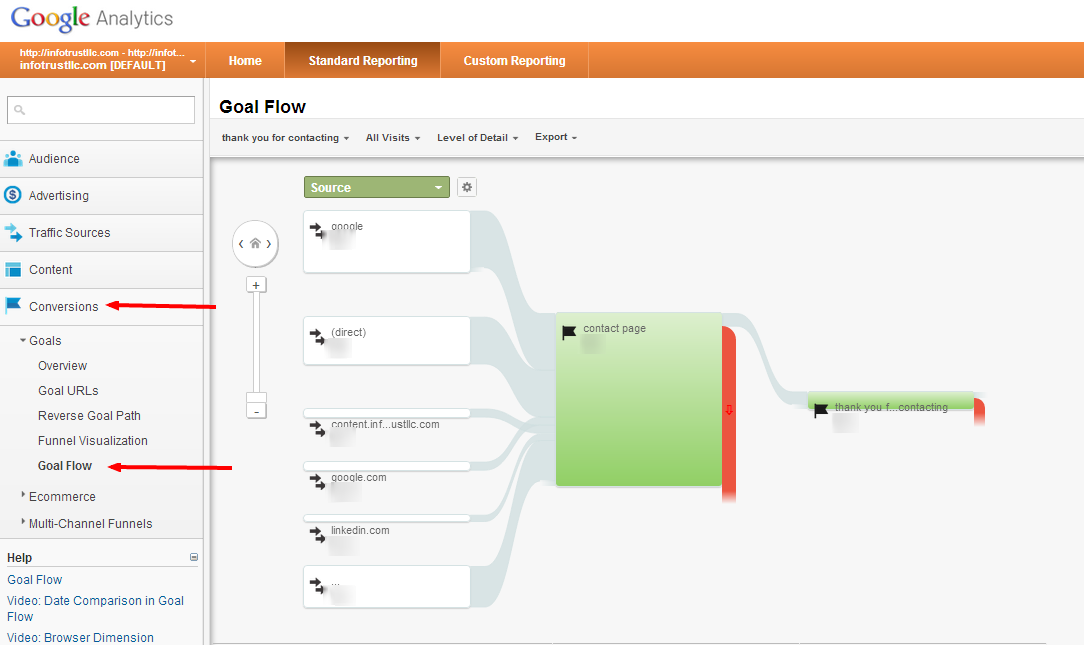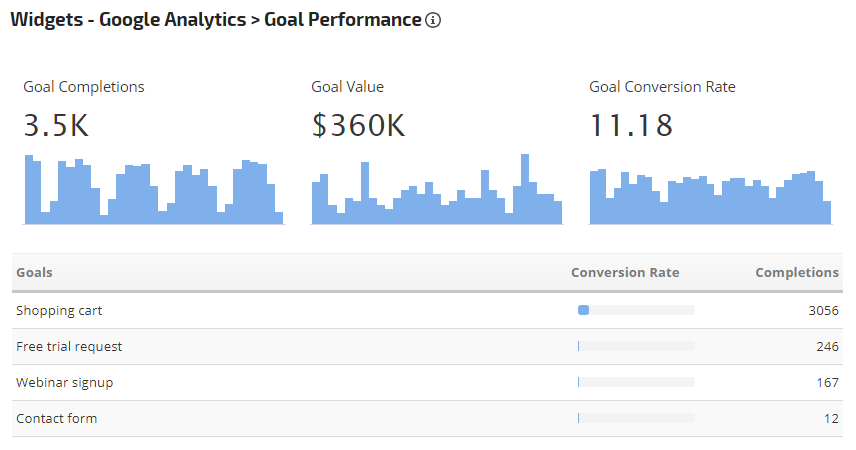Discover the Limitations of Google Analytics Goals: Introducing the Information Kind That Remain Untrackable
As companies significantly rely on data-driven decision-making, understanding the restrictions of devices like Google Analytics ends up being critical. While Google Analytics Goals offer beneficial insights right into individual communications, there exist information kinds that avoid monitoring, presenting obstacles to a comprehensive understanding of individual habits.
Incomplete Individual Journey Tracking
Insufficient individual journey monitoring within Google Analytics can prevent the capability to precisely analyze user habits. When the user trip is not completely tracked, there are voids in the information that stop a thorough understanding of just how individuals connect with an internet site. This absence of insight can lead to missed chances for optimization and enhancements to the user experience.
One typical issue with insufficient customer journey monitoring is the lack of ability to see the full course that individuals take before finishing a goal or leaving the site. Without this details, it is testing to determine where users might be experiencing challenges or friction factors that prevent them from transforming. Furthermore, insufficient tracking can cover the influence of particular marketing efforts or internet site adjustments on customer habits.
To resolve this constraint, it is critical to establish correct monitoring devices within Google Analytics to capture the whole customer journey. This may entail establishing up occasion tracking, goal funnels, or making use of devices like Google Tag Supervisor to ensure that no important interactions go unrecorded. By obtaining an extensive view of the customer journey, web site proprietors can make more enlightened choices to improve user engagement and drive conversions.
Attribution Challenges
Navigating with attribution difficulties in Google Analytics needs a detailed understanding of just how different touchpoints add to the general conversion procedure. Acknowledgment challenges emerge from the intricacy of modern-day customer journeys, where individuals interact with multiple channels before transforming. Google Analytics supplies numerous attribution models like first touch, last touch, and straight, each supplying a various viewpoint on exactly how credit is designated to touchpoints along the conversion course. These designs may not constantly properly reflect the real influence of each touchpoint on the conversion.
One usual acknowledgment obstacle is the problem in connecting conversions to the proper resource, especially in instances where customers interact with several networks before converting. Additionally, cross-device monitoring postures one more attribution obstacle, as individuals often change in between devices throughout their journey, making it challenging to track their interactions effortlessly.
Offline Conversions
Provided the difficulties related to connecting conversions precisely in online channels, the dimension of offline conversions offers a significant opportunity for marketers seeking a more thorough understanding of their clients' trip. Offline conversions refer to activities that clients absorb the real world, such as making acquisitions in brick-and-mortar shops or over the phone, attending occasions, or engaging with printed products - what data is google analytics goals unable to track. These conversions are essential for companies that run both online and offline, as they supply important understandings right into the performance of marketing campaigns across numerous touchpoints
Tracking offline conversions Homepage traditionally postured a significant obstacle for marketers, as it was testing to connect these activities back to details on the internet interactions accurately. Nevertheless, with advancements in technology, such as the combination of CRM systems, one-of-a-kind identifiers, and voucher codes, companies can now bridge the space between online and offline information to get a more all natural sight of client behavior. By effectively measuring offline conversions, marketers can maximize their strategies, allocate resources more efficiently, and ultimately boost the total customer experience.
Cross-Device Tracking
Cross-device tracking plays a critical duty in comprehending the interconnected nature of consumers' digital communications throughout multiple gadgets. In today's omnichannel globe, where individuals flawlessly change in between smart devices, tablets, and desktops, tracking their actions throughout these tools is essential for marketing professionals to gain a thorough view of their client journey.

Additionally, personal privacy concerns and laws such as GDPR and CCPA have even more complicated cross-device monitoring. With users demanding even more control over their information and enhanced limitations on monitoring innovations, marketers must find privacy-compliant and cutting-edge means to link individual communications across tools.
Dynamic Web Content Involvement
Understanding user interaction with vibrant content is pivotal in optimizing digital marketing strategies for enhanced audience interaction. Dynamic material describes web site elements that transform based upon user habits, preferences, or various other factors, providing a personalized experience. Nevertheless, tracking user communications with dynamic material presents obstacles for conventional analytics tools like Google Analytics.
While Google Analytics can track basic communications like clicks and page sights, it may battle to capture more nuanced involvements within dynamic web content. my explanation what data is google analytics goals unable to track. Metrics such as time spent on details dynamic components, hover activities, or communications within pop-ups are commonly not conveniently quantifiable making use of basic monitoring methods. This constraint prevents online marketers' capacity to totally comprehend exactly how individuals are involving with dynamic content and tailor their strategies as necessary

Verdict
In verdict, Google Analytics objectives have limitations in tracking incomplete user journeys, associating conversions accurately, recording offline conversions, tracking cross-device communications, and measuring vibrant material involvement. These restrictions highlight the significance of checking out added monitoring techniques and devices to get a much more extensive understanding of customer behavior and conversions past what Google Analytics can provide.
While Google Analytics Goals offer beneficial understandings right into individual interactions, there exist information types that thwart tracking, posing challenges to a comprehensive understanding of individual habits.Incomplete customer trip monitoring within Google Analytics can prevent the capability to properly assess user behavior. When the individual trip is not completely tracked, there are spaces in the data that avoid a comprehensive understanding of exactly how individuals engage with a web site.One usual issue with incomplete user journey tracking is the failure to see the complete path that individuals take in the my explanation past finishing an objective or leaving the website. By acquiring a detailed view of the customer trip, web site proprietors can make more enlightened decisions to enhance customer interaction and drive conversions.